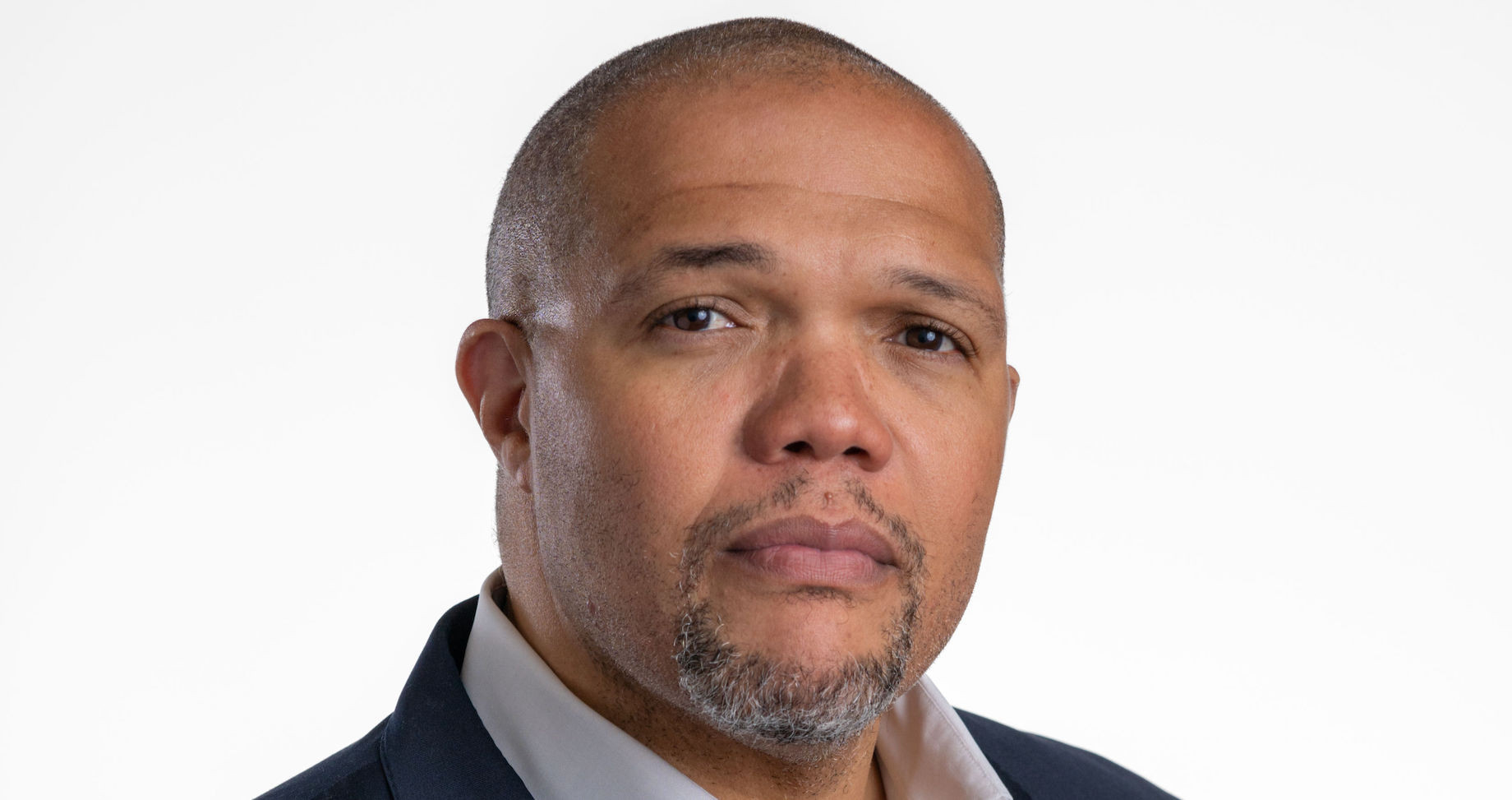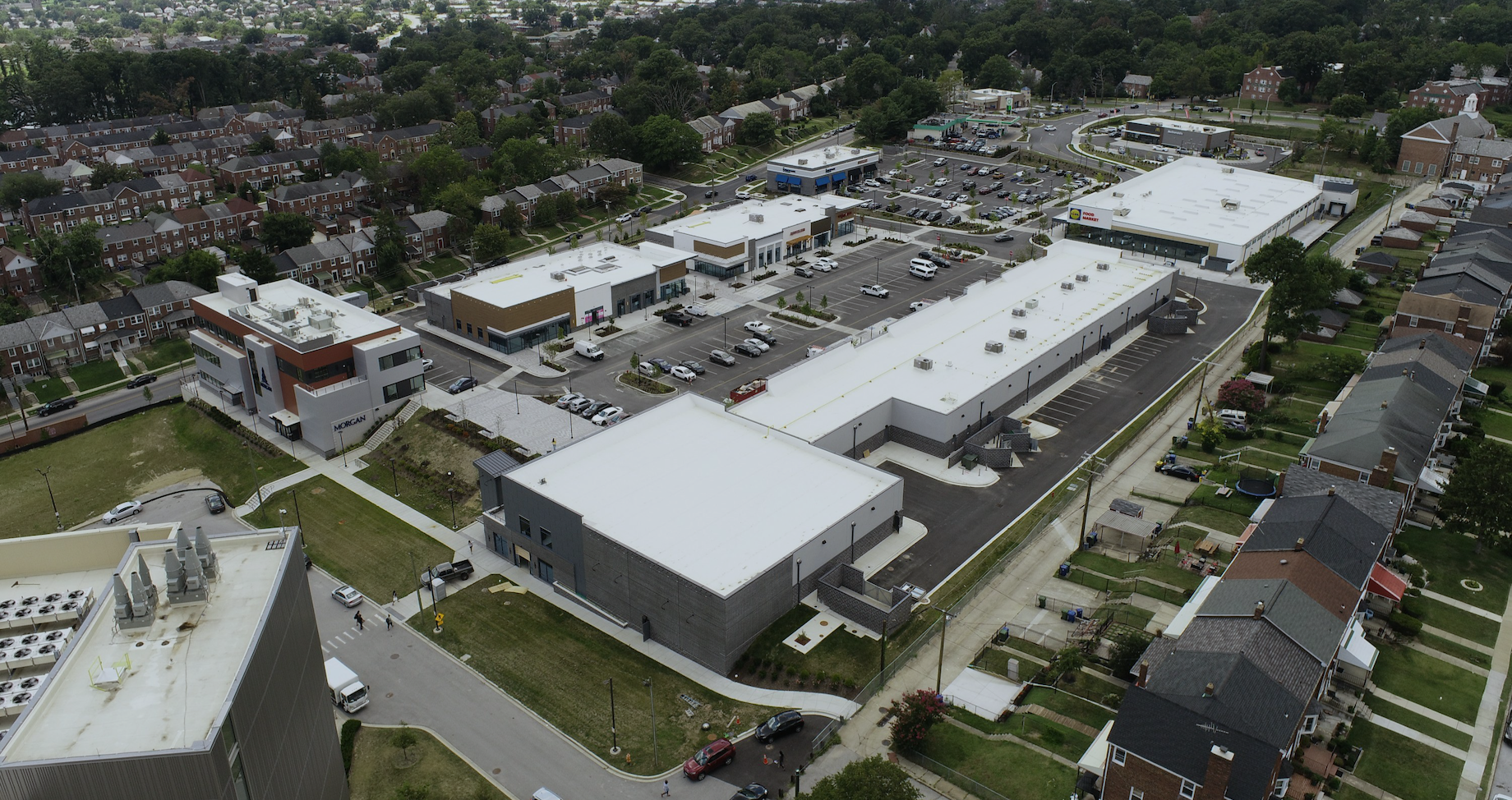With a commercial property and multifamily development portfolio of 11 million square feet, primarily along the Eastern Seaboard, P. David Bramble has been involved in some high-profile projects, especially in his hometown of Baltimore. There, he has turned an abandoned paint factory in an Opportunity Zone across the street from the Johns Hopkins Bayview Medical Center into a retail-oriented mixed-use development. He also is turning the site of the former Madison Park North apartment complex — commonly referred to as Murder Mall, owing to drug deals and shootings — into a residential and retail project.
But Bramble acknowledged that the effort to reinvigorate Baltimore’s Harborplace could be the most closely watched of his endeavors since he co-founded development firm MCB Real Estate 17 years ago.

MCB Real Estate’s P. David Bramble
Developed by the Rouse Co. in 1980, the Inner Harbor asset became the city’s trademark, and its twin pavilions totaling 160,000 square feet were filled with local restaurants, food vendors and other small businesses. “Harborplace was one of the first great examples of a festival marketplace on the water that became a huge tourist destination,” Bramble said, “but more importantly, it was a place that Baltimoreans wanted to go. It was a cool destination that had unique retailers that you couldn’t find anyplace else.”
Over time, the project drew national brands, but it lost its luster amid new owners and delayed renovations. Vacancies climbed, and in 2019, the Baltimore City Circuit Court appointed a receiver for the property after Ashkenazy Acquisition Corp., which had bought the asset for nearly $100 million seven years earlier, defaulted on a $76 million loan. More businesses left before and during the pandemic, including Ripley’s Believe It or Not and Banana Republic. Bubba Gump Shrimp Co. and H&M closed in 2022. In December, the Baltimore City Circuit Court approved MCB Real Estate’s proposed acquisition of Harborplace, and Bramble expects to complete the purchase early this year.
Bramble defers from providing details about redevelopment plans beyond promising to solicit plenty of community input and feedback via public gatherings. But in addition to redeveloping that asset, MCB Real Estate and another firm plan to build a 40-story hotel, office, residential and retail tower on a nearby surface parking lot. More broadly, state lawmakers have committed $166 million to renovate the Inner Harbor, $67.5 million of which is targeted to improve public areas immediately surrounding Harborplace.
“It’s just irreplaceable and unbelievable real estate right in the heart of Baltimore,” Bramble stated. “We can’t go backward in time, but we can go forward and create something unique that captures the authenticity of the site and brings the people of Baltimore back. We figure if the people of Baltimore love it, then others will love it, too.”
Double-Bottom-Line Approach
Taking on such an ambitious redevelopment as Harborplace not only illustrates Bramble’s success in building MCB Real Estate but also indicates his intent to help revitalize Baltimore. His focus on improving lives and neighborhoods is not confined to the metro, however. In 2015, Bramble and MCB Real Estate business partner Everett Sands started Lendistry, a small business finance company focused on underserved urban and rural communities across the country. To date, the Los Angeles-based lender has provided $9.3 billion in loans and grants to roughly 610,000 small business borrowers.
“When we created Lendistry, our thought process was that access to capital wasn’t readily available for everybody,” said Sands, who met Bramble in college and then began working with him on early real estate deals. “We got a glimpse of it when we were trying to raise capital for our projects. Now in fairness, we were relatively young, but we realized that there weren’t a lot of people out there doing what we were trying to do, so there wasn’t a lot of access to capital for us or opportunities to build our profile, so to speak.”
Lendistry focuses on providing economic and progressive growth opportunities in underserved communities, and MCB Real Estate follows a similar path through real estate, he added. “For Dave, those economic opportunities could be housing, they could be office, they could be retail or they could be job creation,” explained Sands, who grew up in Washington, D.C. “The fact that we both have that thought process keeps us bonded together.”
Indeed, Bramble emphasized a double-bottom-line business strategy: generating attractive risk-adjusted returns for investors and at the same time making a positive contribution to society. The desire to make double-bottom-line investments in Baltimore has been particularly strong, given that Peter Pinkard, another MCB Real Estate partner, is also from the city.

At Yard 56, MCB Real Estate brought a grocery store to a designated food desert and an 82,000-square-foot community health center for people in underserved communities.
Meanwhile, at the Madison Park North site, the firm engaged with neighbors to come up with a realistic plan they could support. The result is a project a decade in the making that includes for-sale townhomes and apartments above retail space. Bramble himself grew up not far from the “Murder Mall” apartments and still lives nearby today. “It’s not very often that you get to remove blight and turn the page through redevelopment in your own neighborhood,” Bramble explained. “It has been one of our most meaningful projects, even though it was hard to navigate because of various issues. But we really care about Baltimore, and we see a ton of upside here.”

Madison Park North view from the southeast. Rendering by JP2
Solid Foundation
Bramble’s sense of community formed early: His father was the rector of a West Baltimore Episcopal church, and his mother founded The Baltimore Times in 1986 to report positive stories about the Black community. The family also operated a corner grocery store, which instilled a strong work ethic in Bramble. That background also provided him with ideals similar to those of his business partners. “We’re both inner-city kids, so naturally we grew up seeing our parents, relatives and key stakeholders take an interest in helping specific African American communities do better,” Sands said. “We’re also both beneficiaries of having role models who told us to strive in terms of education and to do good within our communities.”
After graduating from high school, Bramble earned a bachelor’s degree in politics from Princeton University and then attended the University of Pennsylvania Carey Law School. He joined the Steptoe and Johnson law firm in Washington, D.C., in 2001, working on various types of corporate transactions but focusing heavily on real estate workouts, especially those involving distressed borrowers of commercial mortgage-backed securities debt. He frequently worked with Pinkard, a retail specialist. “We did foreclosures and repositionings all around the country and built up a good relationship,” Bramble said. “We eventually convinced each other that we could try to do real estate deals on our own.”
Though one of MCB Real Estate’s first deals was in Baltimore, the city wasn’t a primary arena for the company during those early years. Instead, MCB Real Estate did most of its business in other states like New Jersey and Pennsylvania, especially when it came to retail, Bramble said. It also built up an industrial portfolio and branched into more asset categories as it expanded its footprint and investment strategies, he added.
Today, retail remains “near and dear” to MCB Real Estate’s heart, Bramble said, as 6.4 million square feet of its 11 million-square-foot portfolio is retail.
COVID lockdowns helped cull retail property supply by forcing weaker properties to shutter. Not much new retail property has been built, and a lot of obsolete product has been repurposed, Bramble said. Meanwhile, brick-and-mortar retailers are growing and digitally native retailers are entering physical locations, he added. What’s more, big-box stores, junior-box retailers and other marketplace tenants have bounced back and are eager to expand, Bramble said. It all adds up to significant leasing demand in MCB Real Estate's portfolio, he said. And retail did not experience the same cap rate compression that has occurred in the apartment and industrial sectors, he pointed out. As a result, rising interest rates have had a less detrimental effect on retail property values.
“It has been some time since we have been in a situation where multiple retailers are interested in the same space, but we’re seeing a lot of demand right now in retail leasing across our assets,” he said. “So we’re gung-ho on retail, especially retail in mixed-use settings where it has become clear that it is not just about the retail or the residential but how those things work together to create a sense of place.”

At MCB Real Estate’s $50 million Northwood Commons project near Morgan State University, tenants that have opened recently or that will open over the next few months include Lidl, Barnes & Noble, Beauty Plus, DLTR and Jersey Mike’s Subs.
By Joe Gose
Contributor, Commerce + Communities Today